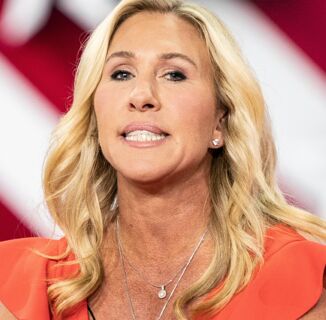AMSTERDAM, Netherlands — There’s no denying that the “T” in LGBTQ lags too far behind in funding. When it comes to foundational and government dollars, more than half of trans organizations globally subsist on less than $10,000 a year, with many operating on a zero dollar budget, according to new data presented at the 2018 International AIDS Conference.
Mauro Cabral Grinspan, executive director of global trans advocacy organization GATE, said that GATE reached out to trans-focused organizations and programs worldwide in 2013 and again in 2016 to assess their funding and what, if any, were the main barriers between trans people and resources.
GATE found that in 2013, more than 50 percent of trans organizations worldwide subsisted on an annual budget of less than $10,000 for all their work. Only 25 percent of these organizations received foundation funding. Of all the money given to LGBTQ organizations globally, only 11 percent of was given to trans-focused organizations and programs.
When GATE, along with queer women justice organization Astraea, followed up in 2016, they found that 55.8 percent of groups were operating with less than $10,000. More than three quarters (78.8 percent) had an annual budget of less than $50,000. In specific regions, 72.1 percent of European trans organizations had budgets smaller than $10,000 while 69.7 percent of those in the Caribbean, Central and South America could say the same.
Cabral Grinspan emphasized that part of the problem trans-specific organizations have in obtaining funding is because of trans marginalization within the LGBTQ community. While 85 percent of the trans groups surveyed were trans-led, it was easier for groups who were not trans led to receive money than ones that were trans-led. Additionally, over 36 percent of organizations said that they were denied funding because donors already funded other LGBTQ organizations, even though they were not trans specific.
Overall, trans organizations often lack the resources it takes to appeal to funders, as well. Of all the groups surveyed, more than three-quarters found barriers to funding, including not knowing where to find donors (44.8 percent), being unsure if they were good candidates for donors (34.5 percent) and, in some cases, open calls for funding explicitly saying they were not interested in funding trans groups (26 percent). Even if they can find potential donors, lack of access to education and proper training often means that these organizations will ultimately miss out on funding. According to the survey, 32.2 percent of trans organizations said applications for funding were too long and complicated and 29.8% globally said they did not have someone who could write to fill out the application. For those who filled out an application, 26.3 percent said they never even received a response from potential funders.
Often, Cabral Grinspan emphasized, trans groups that are too small and want to grow are told that they are not receiving funding because they’re too small. To the detriment of trans organizations, they’re often compared to other, larger LGBTQ groups or larger transgender groups.
Even when a trans group does receive the funding, new barriers can arise. Almost half of respondents said there was a long delay in grant payment, while 42.5 percent said they did not have staff who knew how to complete financial reporting. Another 32 percent had long delays or no response from funders.
Cabral Grinspan said that a major root cause of the lack of trans resources is the lack of data collected on trans people worldwide. Donors said that without data, they would be largely unwilling to fund trans organizations. In this past year, the Trump administration confirmed that they would not be collecting data on either gender identity and sexual orientation on the upcoming Census. In 2015, trans actress Laverne Cox officially called for transgender people to be counted on the census, also citing the lack of data as a root cause of the underfunding of transgender organizations.
The lack of funding has real-world consequences for transgender people. Trans organizations, Grinspan stressed, often take care of the most marginalized, including low-income people, sex workers, people of color and those living with HIV. Without funding, he said, most organizations end up having staffs that are majority unpaid. In fact, he pointed out, trans-led organizations had higher rates of unpaid or volunteer staff than transgender programs within LGBTQ organizations.
Trans people, he said, often perform unpaid labor for these organizations, propagating the idea that trans people should not be paid for their labor. Also, the lack of funding means that organizations cannot provide trans-specific health care. Thirty-six percent said they’d provide trans-specific healthcare if they had the necessary funding.
Cabral closed the session by calling on funders to alter the way they do business in order to fund trans groups. He called on them to do the work of identifying trans-led organizations and offering them resources to build capacity. He also called for LGBTQ organizations to disaggregate trans data from general data, support the development of trans workers, prevent burnout and, most importantly, hire trans people.
Image via Getty
Help make sure LGBTQ+ stories are being told...
We can't rely on mainstream media to tell our stories. That's why we don't lock our articles behind a paywall. Will you support our mission with a contribution today?
Cancel anytime · Proudly LGBTQ+ owned and operated
Read More in Impact
The Latest on INTO
Subscribe to get a twice-weekly dose of queer news, updates, and insights from the INTO team.
in Your Inbox















